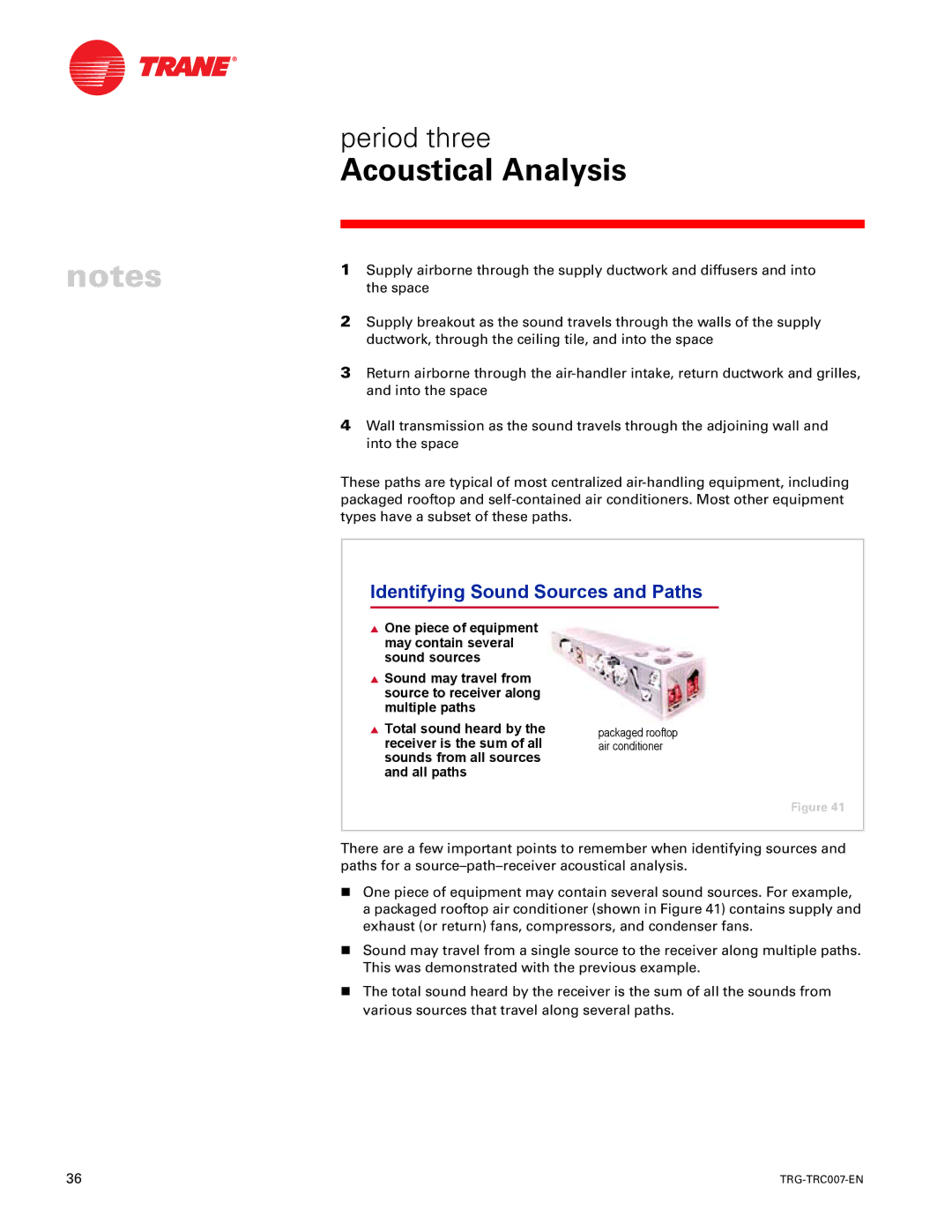
period three
Acoustical Analysis
notes
1Supply airborne through the supply ductwork and diffusers and into the space
2Supply breakout as the sound travels through the walls of the supply ductwork, through the ceiling tile, and into the space
3Return airborne through the
4Wall transmission as the sound travels through the adjoining wall and into the space
These paths are typical of most centralized
Identifying Sound Sources and Paths
IOne piece of equipment may contain several sound sources
ISound may travel from source to receiver along multiple paths
ITotal sound heard by the receiver is the sum of all sounds from all sources and all paths
packaged rooftop air conditioner
Figure 41
There are a few important points to remember when identifying sources and paths for a
nOne piece of equipment may contain several sound sources. For example, a packaged rooftop air conditioner (shown in Figure 41) contains supply and exhaust (or return) fans, compressors, and condenser fans.
nSound may travel from a single source to the receiver along multiple paths. This was demonstrated with the previous example.
nThe total sound heard by the receiver is the sum of all the sounds from various sources that travel along several paths.
36 |
|
